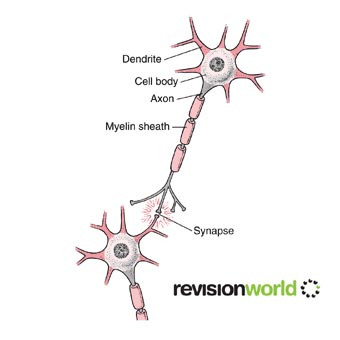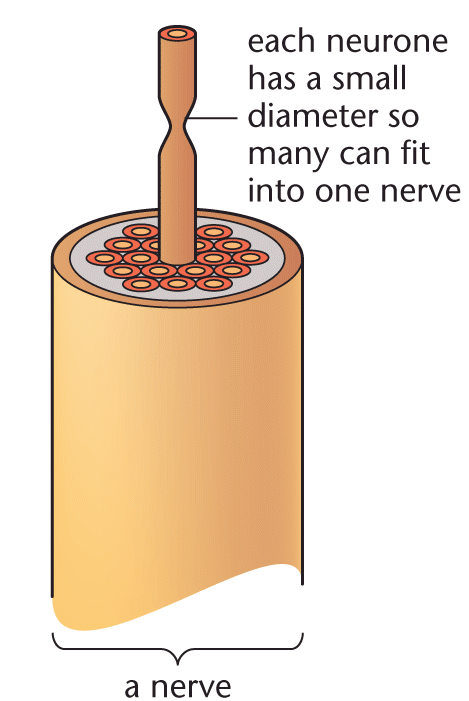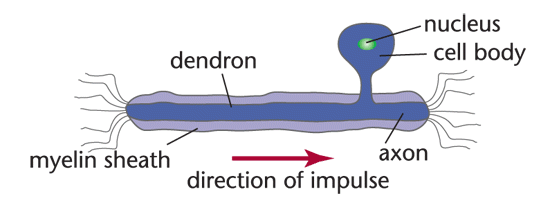Neurones and Synapses
To communicate between receptors and effectors the body uses two main methods.
These are:
- nerves
- hormones.
A neurone is a specialised cell that is adapted to pass electrical impulses.
Each neurone has a small diameter so many can fit into one nerve. There are 3 types of neurones
1. Sensory – carry signals from sense organs (receptors) to the brain (CNS: Central Nervous System)
2. Relay – they pass messages between neurones in the CNS.
3. Motor – carry signals from CNS to muscles (effectors)

Although all neurones have different shapes, they all have certain features in common:
- One or more long projections from the cell body to carry the impulse a long distance.
- A fatty covering (myelin sheath) around the projection for insulation.
- Many fine endings (dendrites) so that the impulse can be passed on to many cells.
KEY POINT: Exam questions often ask how neurones are adapted for their job.
The Structure of a Neurone

Sensory Neurone

Motor Neurone

Synapse
Each neurone does not directly end on another neurone. There is a small gap between the two neurones called a synapse. In order for an impulse to be generated in the next neurone, a chemical transmitter is released. This then diffuses across the small gap.
Many drugs work by interfering with synapses. They may block or copy the action of neurotransmitters in certain neurones.
